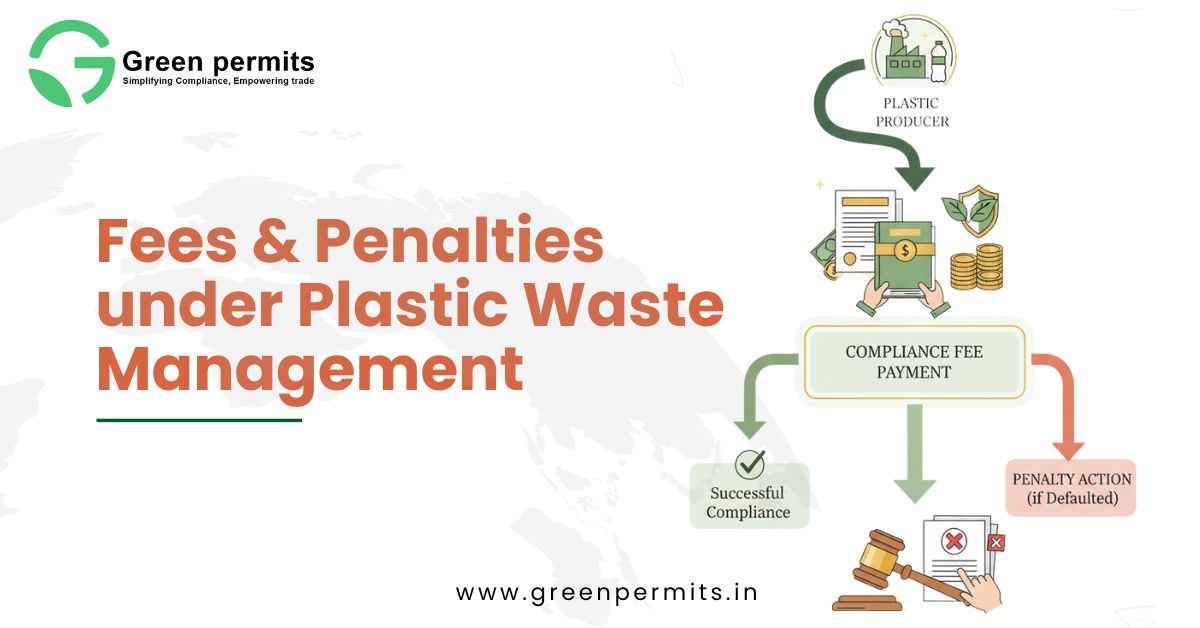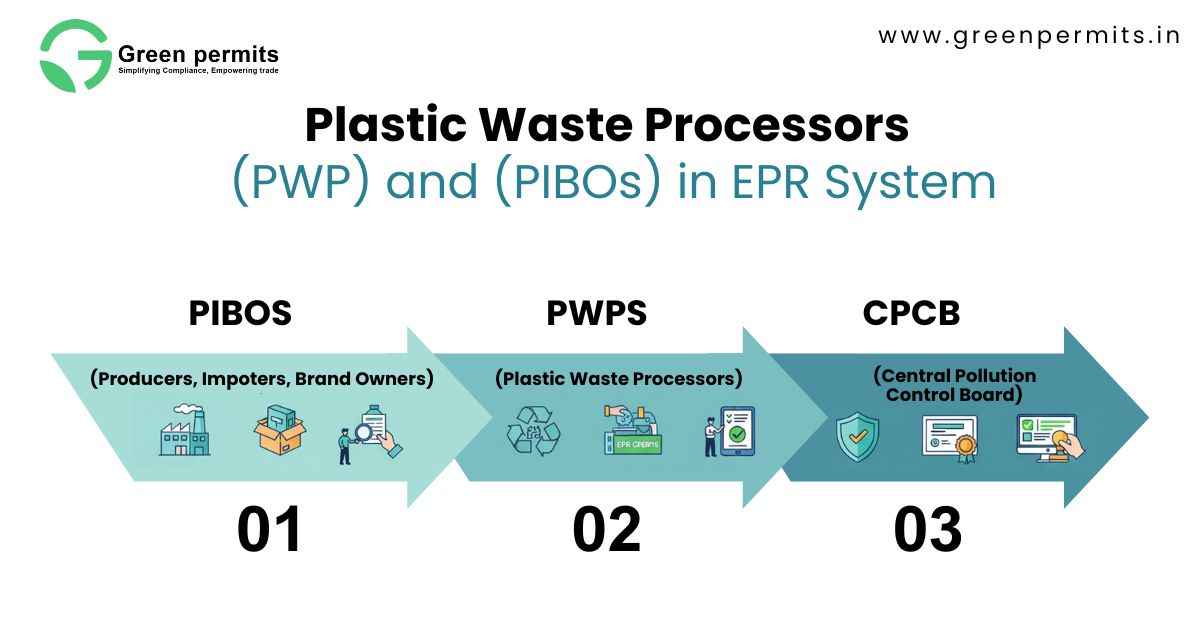When EcoWave Packaging Pvt. Ltd., a small packaging manufacturer in Pune, missed its Extended Producer Responsibility (EPR) filing deadline by two months, the founder didn’t expect much fallout.
Two weeks later, their CPCB registration was suspended, invoices couldn’t be processed by vendors, and an unexpected ₹1.9 lakh penalty arrived.
This story is becoming common across India’s manufacturing and import ecosystem.
The 2025 Amendment to the Plastic Waste Management Rules isn’t just a bureaucratic update — it directly affects a company’s costs, supply chain, and credibility.
This guide explains what EPR fees and penalties mean in 2025, how they’re calculated, and how you can protect your business.
Understanding the 2025 Plastic Waste Amendment
The Plastic Waste Management (Amendment) Rules, 2025 strengthen India’s commitment to circular economy goals.
They link accountability to every kilogram of plastic placed on the market and hold producers, importers, and brand owners responsible for its collection and recycling.
Key highlights
- Barcode / QR-based tracking for all plastic packaging begins July 1, 2025.
- EPR fee rates now reflect material type — recyclable vs. non-recyclable plastics.
- Penalties escalate with continued non-compliance, not just one-time fines.
- Audit and reporting are mandatory through the CPCB online portal.
For business owners, these rules mean shifting from reactive paperwork to proactive waste accounting.
Failing to align early could turn small oversights into major financial setbacks.
What Are EPR Fees and Why Do They Matter?
Extended Producer Responsibility (EPR) fees are mandatory contributions that fund the collection, recycling, or safe disposal of plastic waste generated by your products.
Think of them as an environmental compliance charge — an investment in staying legally protected and operationally smooth.
EPR fees vary depending on plastic category, volume placed on the market, and recyclability.
They are collected by CPCB-approved recyclers or through direct deposit under the EPR portal.
Indicative EPR Fee Structure – 2025
| Category of Plastic Packaging | Indicative EPR Fee (₹ / kg) | Common Use Cases |
|---|---|---|
| Rigid plastics (HDPE, PET, PP) | 4.5 – 6.0 | Bottles, containers, jars |
| Flexible plastics (LDPE, films, pouches) | 6.0 – 8.5 | Wraps, sachets, pouches |
| Multilayer / laminated | 8.5 – 10.0 | Snack, personal-care packaging |
| Compostable / biodegradable | 1.5 – 3.0 | Certified compostable materials |
| Carry bags / restricted use | 10 – 15 | Only for approved export usage |
Interpretation: the more difficult the material is to recycle, the higher the fee.
By designing packaging with recyclable plastics, companies reduce both their compliance burden and costs.
Business takeaway: registering and paying early secures lower-end fee rates and prevents future retroactive hikes.
Penalties under the 2025 Amendment
Under Rule 19 of the amended PWM Rules and Section 15 of the Environment (Protection) Act, 1986, non-compliance now draws sharper, quantifiable penalties.
Regulators want businesses to treat sustainability lapses as seriously as tax defaults.
Penalty Matrix – PWM Rules 2025
| Type of Non-Compliance | Penalty Range (₹) | Enforcing Authority | Typical Business Impact |
|---|---|---|---|
| No EPR registration / renewal | 1 – 5 lakh + 10,000 per day (continuing) | CPCB / SPCB | License suspension, production halt |
| False reporting / data manipulation | 5 – 10 lakh | CPCB + MoEFCC | Blacklisting, loss of market access |
| Late annual return (> 30 days) | 25,000 – 1 lakh | SPCB | Renewal delay, interest liability |
| Shortfall in EPR target | 2,000 per tonne | CPCB | Extra environment compensation |
| Missing barcode / QR on products | 50,000 – 2 lakh per SKU | SPCB | Seizure of goods, customs hold |
Interpretation: the new structure connects penalties directly to waste quantity and duration of default.
A small oversight can compound quickly if filings remain pending.
Why These Rules Matter for Businesses
Ignoring the 2025 rules isn’t just about paying fines — it can interrupt daily operations.
Financially: penalties can exceed your annual compliance budget.
Operationally: a suspended EPR certificate can block customs clearances or supplier payments.
Reputationally: repeat violations become public through CPCB listings, affecting brand perception.
In sectors such as food packaging, logistics, and retail, delayed returns can trigger a ripple effect of lost contracts and late deliveries.
Mini Business Story — When One Delay Cost a Fortune
A Bengaluru-based exporter of bottled beverages forgot to upload its Q4 EPR return in 2024-25.
By the time the oversight was caught, CPCB had already imposed a ₹3 lakh penalty and locked their portal access.
Three containers sat at port for weeks, leading to storage and demurrage charges that tripled the original fine.
That one administrative miss cost the company nearly ₹9 lakh — all because a 15-minute filing reminder was ignored.
How to Stay Compliant in 2025
Practical Steps for PIBOs and PWPs
- Verify registration validity: renew at least 45 days before expiry.
- Label every SKU with QR/barcode: mandatory from July 1, 2025.
- Upload quarterly returns: within 15 days of each quarter’s end.
- Keep records: invoices, recycling certificates, audit reports – minimum 3 years.
- Work only with CPCB-authorized recyclers.
Many medium enterprises are now outsourcing compliance monitoring to specialists or using cloud dashboards that send automatic alerts before deadlines.
EPR Fee vs Penalty — The Real Cost Difference
| Compliance Scenario | Annual EPR Fee (₹) | Possible Penalty (₹) | Outcome |
|---|---|---|---|
| Fully compliant / early filing | 75,000 | — | Smooth renewal, no risk |
| Filed 3 months late | 75,000 + 25,000 | 1 lakh | Temporary portal freeze |
| Unregistered / false data | — | 5 – 10 lakh + suspension | Supply-chain disruption |
Insight: Paying your EPR fee on time costs less than one missed compliance cycle.
Compliance Trends to Watch in 2025
- Digital traceability through QR/barcodes becomes fully enforceable mid-year.
- Third-party audits required for companies exceeding 2,000 tonnes annually.
- GSTN integration allows authorities to cross-verify declared packaging volumes.
- Tiered penalties ensure MSMEs pay proportionate fines — but no one is exempt.
The message is clear: data accuracy, transparency, and timely reporting define compliance success.
Conclusion — Compliance Is Cheaper Than Penalty
The 2025 rules transform plastic-waste management from a passive obligation into an active business responsibility.
Companies that adapt early not only avoid fines but also win trust from clients and regulators.
Compliance is now a competitive edge: predictable fees vs. unpredictable penalties.
📞 +91 78350 06182 | 📧 wecare@greenpermits.in
Book a Consultation with Green Permits to simplify your EPR compliance.
Book a Technical Call with Expert
FAQs
Between ₹4.5 and ₹10 per kg based on plastic type and recyclability.
All producers, importers, and brand owners introducing plastic packaging into the market.
Up to ₹10 lakh plus ₹10,000 per day for continuing offence.
Penalty of ₹25,000 – ₹1 lakh and risk of portal suspension.
From July 1, 2025, for all registered PIBOs and PWPs.



